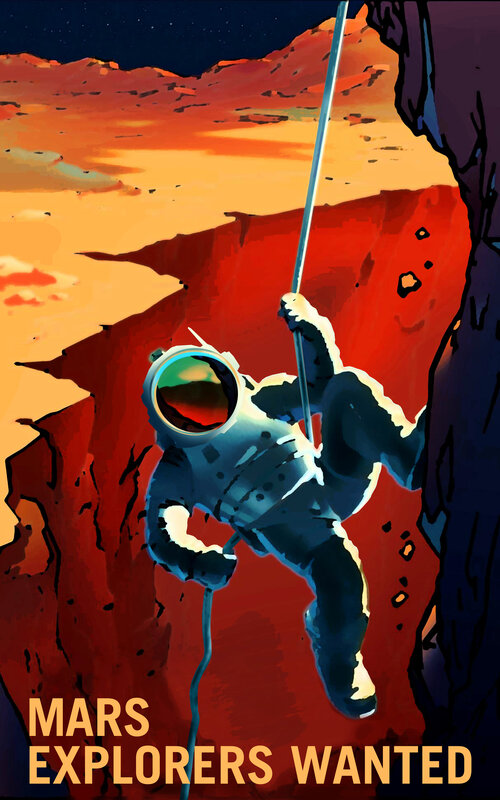Do you have what it takes to colonize Mars? NASA might need you.
Loading...
NASA released free posters Thursday, promoting astronaut recruitment that echo war effort posters from World War I – only this time Uncle Sam is wearing a spacesuit. В
“People with special talents will always be in demand for our Journey to Mars,” . “Whether repairing an antenna in the extreme environment of Mars, or setting up an outpost on the moon Phobos, having the skills and desire to dare mighty things is all you need.”
Although NASA doesn’t plan to build colonies on Mars until 2030, the posters assure Americans that more than just rocket scientists will be needed for space colonization – there are posting advertising jobs for farmers, surveyors, teachers, and technicians. В
“NASA originally commissioned these posters for an exhibit at the Kennedy Space Center Visitor’s Complex in 2009,” NASA explains on its website. “As part of our journey to Mars, these versions are .”В
But the Mars marketing campaign is somewhat irrelevant, considering an important application deadline has already passed.
The first Mars residents will likely be chosen from the pool the candidates who recently applied for NASA’s 2017 astronaut class. And this application campaign hardly needed marketing: Between Dec. 14 and mid-February, NASA received approximately 18,300 applications for eight to 14 spots.Мэ
This most recent application round shattered records. In 1978, NASA received just 8,000 applications for its astronaut program. The application influx can be attributed to an increased American interest in space, or simply the fact that the necessary qualifications have been reduced.Мэ
NASA chose its first seven of astronauts in 1959 from military test pilots with engineering or flight experience, and towards the 21st century shifted more toward academic qualifications hiring scientists and doctors.МэВ
But now, a new swath of Americans are eligible for Mars colonization.Мэ
“Lots of people don’t realize this, but all you need in order to be considered is a bachelor’s degree in a STEM field and three years of experience – and teaching, even at the K-12 level, ,” writes The Washington Post. “Sure, NASA tends to pick folks who have head-spinning combinations of advanced degrees and military flight experience, but technically your average high school chemistry teacher has a shot.”В
But even if your high school chemistry teacher is accepted amid the slim odds (a 0.0004 percent chance to be exact) the challenge is likely just beginning. After NASA announces the next astronaut class in the summer of 2017, the future citizens of Mars will spend two years of training at the Johnson Spaceflight Center in Houston, Texas where they will receive engineering, science, and language classes as well as physical training.
NASA’s Jet Propulsion Lab (JPL) released an additional set of 14 posters – a series named “Visions of the Future” – in February to build support for their future ventures into space tourism.Мэ
Like the colonization posters released this week, the “Visions of the Future” series are symbolic of vintage travel posters of the late 20th century.Мэ
“Imagination is so critical to creating ,” JPL visual strategist Dan Goods tells CNN. “Many of the things we are doing today were imagined by artists and science fiction writers decades ago. These destinations are all actual places that we know about, and one day, perhaps humans can go to them in the future.”В





